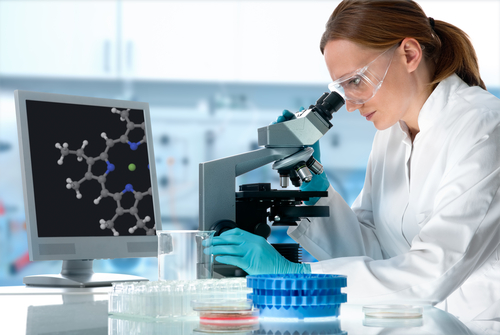In order to understand the molecular mechanisms by which an anti-HIV medication induces fatal mutations in the virus’s genetic material, researchers at University of Chicago and the Massachusetts Institute of Technology are using a new spectroscopy method. Results from the study may support efforts for the development of next generation anti-viral treatments.
In order to adapt to environmental pressure viruses are able to rapidly mutate, a feature that makes viruses able to become resistant to anti-viral drugs. However, using a strategy called lethal mutagenesis, scientists have been able to develop therapeutic anti-viral agents for Hepatitis C, HIV and influenza. This approach is able to douse viruses by making their high mutation rates above an unbearable threshold. If they face too much mutation they are unable to their genetic material.
“They can’t replicate and so are quickly eliminated,” said Andrei Tokmakoff, the Henry G. Gale Distinguished Service Professor in Chemistry at UChicago in a recent news release. “In order to make this work, you need a stealth mutagen. You need something sneaky, something that the virus isn’t going to recognize as a problem.”
In the study titled “Two-dimensional IR spectroscopy of the anti-HIV agent KP1212 reveals protonated and neutral tautomers that influence pH-dependent mutagenicity,” published in the journal the Proceedings of the National Academy of Sciences, the research team reports their findings of the anti-HIV agent KP1212. Data was collected using two-dimensional infrared spectroscopy, a laser method that combines high sensitivity and ultrafast time resolution to chemical structure. “Two-dimensional infrared spectroscopy will be critical on the path ahead. It lets us look at the structures that exist in aqueous solution, which is the natural milieu of cells,” said in the news release the study co-author John Essigmann, MIT’s William and Betsy Leitch Professor of Chemistry, Toxicology, and Biological Engineering. Essigmann is co-founder of a pharmaceutical company that is developing mutagenic inhibitors of HIV.
“We also have done nuclear magnetic resonance, which is very informative, but those studies were done in organic solvents that probably do not as accurately provide a view of what happens in cells as did the infrared studies done by the Tokmakoff group,” Essigmann said in the news release. The researchers designed lethally mutagenic molecules like KP1212 to look like biological DNA bases, the adenine-thymine, cytosine-guanine base pairs. “These analogs can bind to the wrong base partners and therefore lead to genetic mutations,” said the study’s lead author, Sam Peng in the news release.
KP1212 is a variation of cytosine, which usually pairs during replication with guanine. However, KP1212 induces mutations when it pairs with adenine. Results from previous studies have indicate that KP1212 indices mutations by shape shifting — converting into another molecular structure by relocating its hydrogen atoms on nitrogen and oxygen atoms, a process called tautomer.
In 1953, James Watson, SB’47, and Francis Crick proposed the tautomer hypothesis is based on the DNA’s double-helical structure. “The shuffled hydrogen positions in rare tautomers alter the hydrogen bonding patterns, resulting in incorrect base paring,” said Peng.
In contrast with traditional methods, the 2D infrared spectroscopy is able to distinguish between the normal and shape-shifted structures. In this news research the scientists measured the rapid shape shifting and found that it occurs under physiological conditions: in 20 billionths of a second.
In their experiments, the researchers thought that they were going to find only two dominant tautomers, however, they found more, as KP1212 can also accept an extra proton, giving it a positive charge at physiological levels of acidity making it possible to have more rearrangements and more tautomer structures. “The number of possibilities exploded,” Tokmakoff said.
The researchers also found that both the protonated and non-protonated forms eased the rate of viral mutation, even if the protonated form is absent the virus is still able to mutate, however, at a lower rate. “We found that under physiological pHs, KP1212 is significantly protonated and this protonated form induces even higher mutation rates, reaching approximately 50 percent,” Peng said. “KP1212 is about 20 percent of the way toward being an ideal therapeutic mutagen. The hints given us by the spectroscopy guide us toward even better mutagenic molecules,” Essigmann added.

